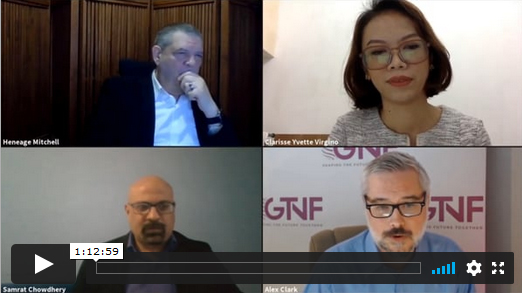One Billion Voices


The panel discussion “One billion voices” debated the difference consumer advocates can make in promoting harm reduction and risk-proportionate regulatory frameworks. Clarisse Yvette Virgino, member of the Coalition of Asia Pacific Harm Reduction Advocates, provided a powerful example of consumer advocacy in action. The Philippines had originally intended to ban electronic nicotine-delivery systems (ENDS). Through active discussions with lawmakers, consumer groups and their allies managed to avert prohibition.
Plenty of challenges remain, however. Philippine law classifies e-cigarettes and tobacco-heating devices as tobacco products, which means they are subject to similarly strict restrictions. What’s more, damaging misperceptions persist, with many inaccurately viewing ENDS as equally or more harmful than cigarettes. The government closely toes the anti-harm reduction line set out by the WHO, and President Rodrigo Duterte has repeatedly made negative comments about vaping.
The situation is worse in India where the government last year banned e-cigarettesand tobacco-heating products, denying the country’s 110 million smokers access to less harmful alternatives. Samrat Chowdhery, president of the International Network of Nicotine Consumer Organizations, bemoaned the exclusion of nicotine consumers from the debate. “Once somebody starts using a tobacco product, their experiences and opinions no longer matter,” he lamented. The ban has spawned a thriving black market—but without the quality controls that were in place previously, according to Chowdhery. It has also driven many vapers back to smoking.
India’s hostility to harm reduction extends to oral products. The country boasts a huge smokeless market with offerings such as gutka and pan masala. As Chowdhery points out, however, not all smokeless tobacco products are created equal; the segment has its own risk continuum, with snus and modern oral products at the low end of the scale and Indian smokeless near the top. “Indian smokeless is extremely deadly,” he says. “It is linked to about 350,000 premature deaths annually.”
The availability of less unhealthy smokeless alternatives should make India ripe for substitution. “Unfortunately, Indian tobacco control is trying to conflate risk, using the example of Indian smokeless to claim that all smokeless tobacco products are bad,” said Chowdhery. The other obstacle is price: Indian smokeless is extremely cheap—cheaper even than bidis, the most used form of smoked tobacco in India. “So if you look at converting gutka and pan masala users, then the price point has to be where consumers can afford it,” he said.
The panel debated the challenge of communicating the benefits of cigarette alternatives. Heneage Mitchell, director of Factasia, said his organization was constantly struggling to counter misinformation. Erroneous headlines depicting vaping and smoking as equally harmful have a huge impact, he said, but it is difficult to get publishers to retract their stories. And unlike their adversaries, vapor advocates have limited resources. “They have billions; we have pennies,” said Mitchell, comparing his finances with those of the WHO and Bloomberg Philanthropies. Lacking budgets, consumer advocates are relying on social media to make their voices heard—but the way those platforms are designed means that activists are often finding themselves in echo chambers, preaching to the choir. “There is no magic bullet,” Mitchell said.
Making matters worse, some 50 percent of the world’s tobacco production is controlled, through whole or partial stakes in tobacco companies, by governments that have signed the treaty. “That makes the FCTC an institutional tobacco trader lobby,” said Chowdhery. Tellingly, when Canada and the EU in 2018 supported making the FCTC proceedings transparent, they were countered by countries such as Thailand and India, which have substantial interests in their tobacco industries.
Despite the formidable obstacles to harm reduction, the panelists took heart from the fact that consumers are becoming more vocal. The personal experience with lifesaving devices has made many eager to speak up. Chowdhery said he was encouraged to see how many so-called experts are now facing pushback from consumers who are “calling bullshit.”
Panel moderator Alex Clark, CEO of the Consumer Advocates for Smoke-Free Alternatives Association in the United States, noted that consumers in democracies around the world should compensate for their lack of financial firepower by turning up at elections. “No matter where you are, vote,” he said.